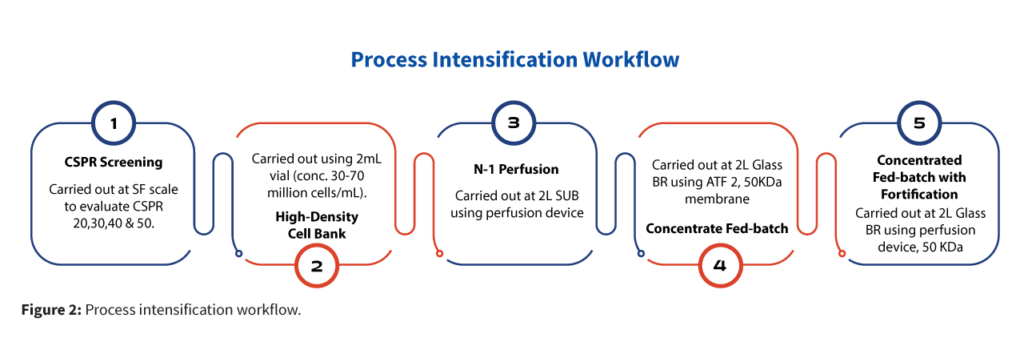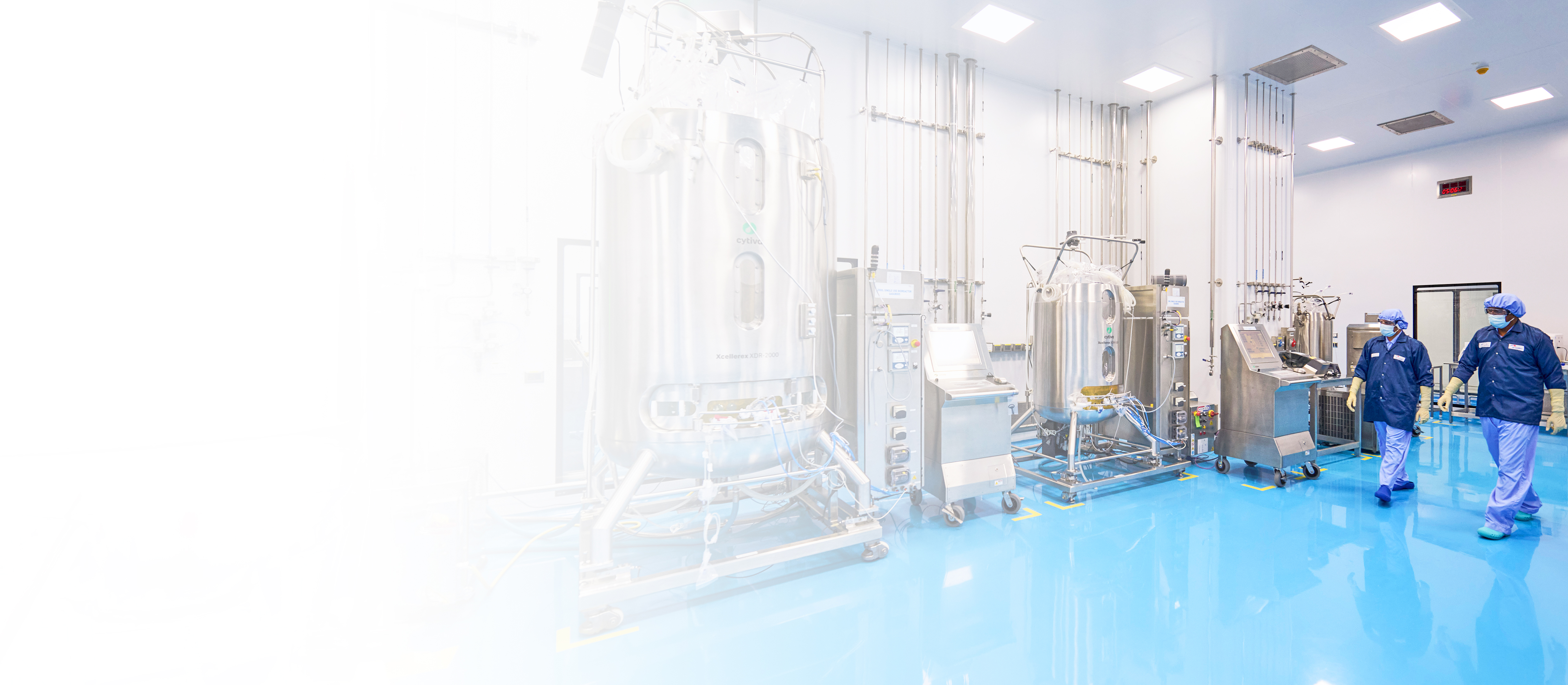To accelerate the overall bioprocess timeline while maintaining cell quality and productivity, a streamlined and intensified seed train and production strategy was implemented. The process (Figure 2) began with the CSPR screening at shake flaks to identify best condition to achieve a higher viable cell density at shake flask, establishment of high cell density cell banks (30–70 million cells/mL) to provide a robust foundation for seed expansion. Subsequently, N-1 perfusion was performed using a perfusion device, enabling rapid expansion of viable cell numbers. Upon reaching the desired cell density, N stage production-scale bioreactor was directly inoculated from the N-1 stage, bypassing intermediate bioreactor steps to streamline the workflow.

To further optimize scale-up, traditional intermediate-scale bioreactors could be replaced with perfusion-enabled Wave bioreactors at the seed stage, simplifying process logistics and reduce Cost of Goods Sold (COGS).
At Aragen, for process intensification, a concentrated fed-batch approach has been chosen to reduce the operation complexity and betterment of COGS. In this process a 50 kDa hollow fibre membrane has been used to retain monoclonal antibodies and allowing only waste metabolites to be removed from the system while ensuing the continuous addition of fresh nutrients.
Fresh media addition rate was adjusted in such a way that it helps to increases the cell mass. The primary objective was to get a higher a viable cell density (VCD) of > 100 million cells/mL in a short period. Once the viable cell density reaches >100 million cells/mL, 75% culture is harvested and purified up to Protein A, followed by LPT and intermediate depth filtration steps. At this stage, spent media analysis should also be performed to understand the key media component depletion trends of key media components. At Aragen, a robust spent media analysis method has been developed, which can identify 85 components divided into seven categories: amino acid, acids, vitamins, amino acid derivatives, nucleotides, nucleosides, choline-related components, and others.
A fresh media top-up will then be performed with the remaining 25% culture to achieve the final VCD in a range of 25-30 million cells/mL. The perfusion rate will be adjusted to maintain a VCD between 50-60 million cells/mL, providing greater operational flexibility using a single-use bioreactor. At this stage, spent medium analysis data should be leveraged to fortify the media with required amino acids, reducing media consumption while maintaining optimum nutrient levels.

